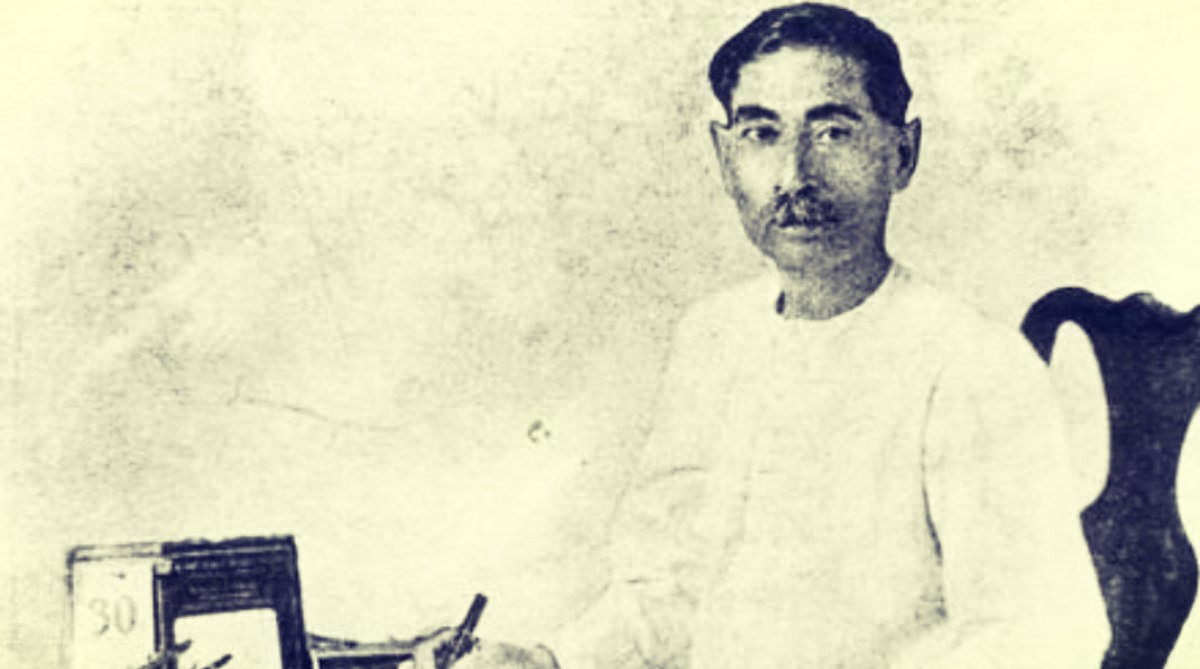Intel appoints Santhosh Viswanathan as India region head
Chip maker Intel on Friday said that it appointed Santhosh Viswanathan to head the India region business as its Managing Director (MD).
It is time again to recall five of his best known works that deal with the pain and suffering of the deprived classes, communities and, especially, women.

(Photo: Twitter/@Being_Clement)
Today is the 138th birth anniversary of illustrious Hindi writer Munshi Premchand. Born as Dhanpat Rai Shrivastava on 31 July 1880 in Lamhi village located near Varanasi, Premchand presented the class struggle and caste discrimination prevalent in pre-Independence India like no other writer before or after him. He can be called the first modern litterateur from Uttar Pradesh to have brought out the pain and suffering of the general population in his society, where religion and caste are still the parameters by which man measures man.
Premchand’s mark in the world of literature has elevated him to the status of the greatest writer in Hindi literature who wrote extensively about the hard reality of caste and class in our society – depraved features so deeply festooned that we are still struggling to eradicate them.
President Ram Nath Kovind, in his tribute posted on Twitter today, said, “Remembering Munshi Premchand on his birth anniversary. A fine writer and novelist, his poignant stories centred on farmers, the poor and the extraordinary emotions of ordinary people.”
Advertisement
Remembering Munshi Premchand on his birth anniversary. A fine writer and novelist, his poignant stories centred on farmers, the poor and the extraordinary emotions of ordinary people #PresidentKovind
— President of India (@rashtrapatibhvn) July 31, 2018
Uttar Pradesh Chief Minister Yogi Adityanath paid homage to the 20th century literary icon from his state by hailing him as the “Upanyas Samrat” (King of novels).
गोदान,गबन और रंगभूमि जैसे कई प्रसिद्ध उपन्यासों के रचयिता “उपन्यास सम्राट“ मुंशी प्रेमचंद जी की जयंती पर उन्हें कोटि-कोटि नमन। #MunshiPremchand pic.twitter.com/yUjz9uuIIk
— Yogi Adityanath (@myogiadityanath) July 31, 2018
It is time again to recall five of his best known works that deal with the pain and suffering of the deprived classes, communities and, especially, women. Premchand felt as strongly for the women as he did for the classes and the castes. He brought out his indignation against the oppression they faced in his works, which is why all of his works have a recurring yet forever significant theme.
It is important for us to read Premchand’s writings again because it will help us realise, rather disturbingly, that the discrimination between peoples and desolation of the society of the early 20th century, as was presented by him so captivatingly in his unforgettable works, remain as is to this day – around 100 years later.
Here are the five stories other than ‘Godan’ that you should read.
Through the story of blind Surdas, we come to know how the British, along with the zamindar (landowner) class, oppressed the farmers. The complex plot deals with Surdas’s struggle in the face of oppression normalised in the society he lives in. The protagonist is a vehicle through which we see how the British rulers and landowning Indians systematically oppressed the working classes and the farmers of rural India.
Counted among the finest short stories by Premchand, Idgah is about a poor, orphan Muslim boy who buys tongs for his grandmother, instead of toys for himself, on Eid. How he explains his purchase to his friends who mock him for buying tongs is the interesting part of the story. Through the story, centred on the boy, Premchand drives home two significant messages: The first is that money should be spent wisely. The second is that we must love our dear ones selflessly. The story also throws light on the rich-poor divide in the society where the rich, knowingly or unknowingly, mock the poor. It also beautifully captures the love of an old grandmother for her grandson and the little grandson’s wisdom.
The story focuses on the right path in the fight for justice. Amarkant, the protagonist, is an idealist who takes a more violent approach for the sake of farmers and untouchables in the quest for the kind of recognition his wife, Sukhada, gained in her fight for the downtrodden. Besides the core theme, the story also touches upon the flaming subject of inter-religious marriage. Unthinkable in the time when the story was penned, inter-religious marriage is still one of the most contentious topics capable of thrusting a society into a spiral of frenzied violence.
‘Thakur Ka Kuan’ has perhaps the most powerful female character in Premchand’s literary repertoire. Gangi, a Dalit woman, goes off in the night to fetch pure water for her ailing husband. Being from the underprivileged class, Gangi and her husband, Jokhu, are not allowed anywhere near the well of the upper caste Thakur of the village. The story shows the deep-rooted caste divisions in the society in which even something as basic and life-saving as water is denied to those who are not born into a certain caste. Sadly, we still have many such kuans and Thakurs in 2018.
Some call ‘Gaban’ Premchand’s best work. The story is about a man from a middle class family feverishly aiming to become rich in order to satisfy his wife’s excessive craving for jewellery. In doing so, the man, Ramnath indulges in things he wouldn’t have done otherwise leading to his downfall and eventual desertion of family. How the escapist Ramnath realises his folly through his wife Jalpa’s brave attitude completes the story. It is a story against corruption and greed, and tells many of the Ramnaths of our time how their actions might bring disrepute to their families.
Advertisement